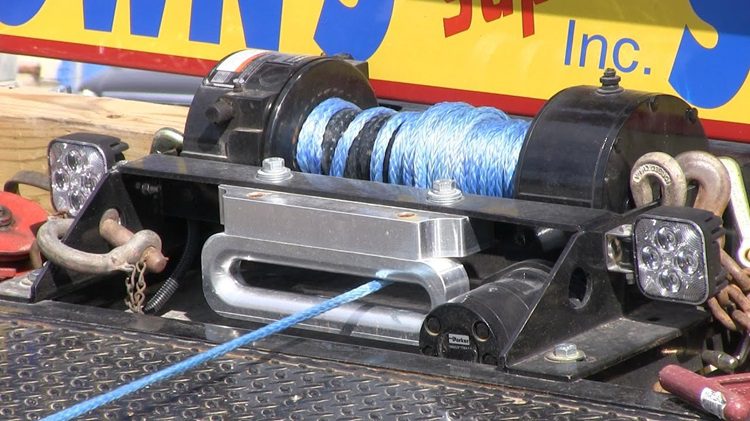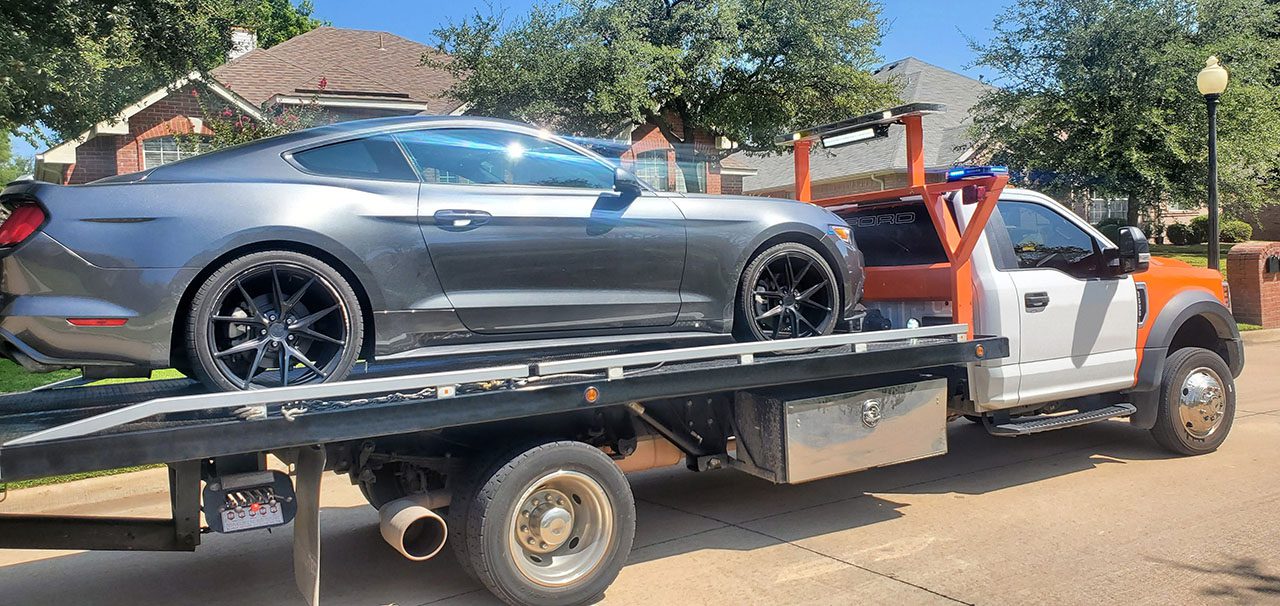Whether clearing jackknifed semi-trailers from highways or hoisting mangled vehicles from nasty accident scenes, flatbed tow trucks are indispensable workhorses for recovery operations, include those at Top Dogz Towing in Charlotte. Their versatile platform design, rugged mechanics, and array of attachments allow them to handle even the most challenging transport and extraction jobs.
For motorists stranded with broken-down or damaged cars, the arrival of a flatbed tow truck means knowing their vehicle will safely make the journey to a repair facility no matter its current state. And for towing operators, it represents a multifaceted machine perfectly suited to tackle a vast range of difficult recovery scenarios.
Powered by powerful engines and equipped with robust hydraulic lifts, winches, and extensive tooling, flatbed tow trucks are engineering marvels built for heavy lifting under demanding conditions. This specialized equipment requires highly skilled operators to deploy its full toolbox of capabilities.
In this month’s article, we will explore the anatomy of the modern flatbed tow truck – delving into its specialized components and how professionals leverage its versatility for any towing or recovery task.
The Flatbed: Durable Cargo Carrier
Constructed of heavy-duty steel, and situated to the rear of the truck cab the actual the actual flat “bed” on the this configuration tow truck is the namesake and defining feature of these capable tow vehicles.
Although they may look basic, modern flatbeds feature advanced I-beam reinforcements bolster the flatbed’s strength to safely support loads exceeding 7,000 pounds. Non-slip industrial bedliner coatings provide durable traction. modern flatbeds range in 12-20 feet in length to accommodate a wide range of vehicle sizes.
Everything has been designed with safety and longetivity in mind, like open-grate loading surfaces meet standards preventing hazardous fluids from leaking through onto lower components or the road below during transport, and adjustable tiedown points along the bed’s sides and ends allow for versatile securement configurations using chains, straps and other tie-down accessories.
Anti-slip ramps smoothly guide vehicles up multiple grades to all sections of the flatbed. Rubber edge protectors lining ramp ends shield paint and bodywork.
Rear LED lighting, reflective striping and other conspicuity aids maximize visibility for following motorists when hauling cargo onto public roads.
Corrosion-resistant finishes permit flats beds to withstand exposure to harsh weather elements year-round without risk of deterioration.
Ever wonder what type of tow truck is used for a given job? This article might help answer your questions…
Tilting the Flatbed with Hydraulics
Most modern flatbed tow trucks feature a hydraulic system that not only lifts the bed vertically, but also tilts it backward between 10-13 degrees. This allows the bed to be angled for optimal loading and unloading of vehicles.
Heavy-duty hydraulic cylinders are situated beneath the front of the flatbed, toward each corner and, when engaged, they smoothly lower the front end down while simultaneously raising the rear end upward. This tilting motion makes it possible to safely drive cars directly on and off without needing ramps. It also helps maneuver very large vehicles or adjust center of gravity for overweight loads.
Operators have precise control via hydraulic or electronic controls to adopt any intermediate angle between vertical and full tilt. Electronic sensors automatically maintain the bed at level for safe travel down roads.
The Winch/Pulley System – The Heavy Lifter

Most towing services opt for a heavy-duty winch that provides the power and control to lift and pull vehicles onto the truck. Industrial winches used on tow trucks are capable of lifting weights up between up to 30,000 pounds, depending on the model.
The winch is powered by the truck’s alternator and batteries to supply electricity to its robust electric motor. Steel cable unspools from the winch drum and runs through protective pulleys positioned on steel beams above the flatbed.
Attached to the cable is a hook that crews use to secure to different anchor points on the disabled vehicle, such as the frame or a tow point. From the cab controls, operators can spool the cable in or out, lowering or raising the car accordingly.
As the winch motor engages and turns the drum, it pulls the cable taught. This gradual lifting force allows the vehicle to be smoothly powered up the angled ramps onto the flatbed. Toggle controls regulate speed for precision maneuvers.
If vehicles need to be pulled or swung around for access, the pulley system acts as a pivot point, redirecting the cable line at a right angle. This flexibility is key for challenging recovery scenarios on the side of roads or highways.
The winch and cab controls are critically important parts of the truck, providing operators easy, strength-amplified access to maneuver vehicles for secure transport. It’s one of the signature tools that sets flatbed tow trucks apart.
Stabilizing the Truck with Ourriggers
When side-winching a Ford F150 from a ditch off I-85 in Charlotte, like we did the other day, you need a truck that is completely stable on the road. That’s where outriggers come in.
Outriggers are an important safety feature on flatbed tow trucks used in certain situations to stabilize the vehicle during heavy lifts. Here are some details on when and how they are utilized:
- Outriggers are deployed anytime the full weight capacity of the flatbed will be approached or exceeded. This could include very heavy vehicles, multiple vehicles, or unusual load configurations.
- They extend outward from the truck chassis on both driver and passenger sides, near the rear dual wheels. This widens the vehicle’s stance for improved stability.
- Hydraulics automatically control them to lower footpads firmly to the ground, or they can sometimes be manually pumped down.
- Leveling indicators help operators ensure the truck is equally balanced front to back and side to side before proceeding.
- Outriggers create an oversized stable base so the full lifting and overhead range can be used safely, without risk of truck tipping over despite high off-center loads.
- They must be fully extended before initiating any lifting cycles and remain deployed until all weight is removed from the flatbed at job’s end.
Proper outrigger use is critical for security when performing heavy recovery tasks. They elevate safety above the truck’s normal capability.
The Wheel Lift Attachment
Flatbed tow trucks can come with a variety of attachments that typically secured at the rear hitch.
One we swear by is a wheel lift attachment.
A wheel lift is a hydraulic lifting yoke that mounts to the rear hitch receiver of the truck. It features two adjustable forks that slide under a vehicle’s tires/wheels.
Wheel lifts provide an alternative method for towing vehicles in addition to the flatbed. It’s super useful when tranporting more than one vehicle is necessary – as in the case of an accident
Rather, it cradles only two of the vehicle’s four tires, usually in the rear. This allows those two tires to remain in contact with the road surface while being towed.
Forks slide under each tire and are then lifted just enough by hydraulics to support the weight normally borne by those tires.
This partial lift technique allows disabled vehicles to be re-positioned safely while still partially weight-supported and steered, preventing further damage during towing maneuvers.
Putting Safety First
As heavy duty recovery professionals, flatbed operators face inherent hazards. Their work demands stringent safety. Given substantial weights and forces involved, safety is engineered into every aspect of modern flatbeds.
- Protective Cab Features: Rollover protection structures surround flatbed operator cabs. These heavy-gauge steel cages are designed to withstand major impacts from vehicles or debris. Dual batteries ensure hydraulic and emergency lighting function even if one battery fails.
- Safety Chains and Tiedowns: Vehicle transport requires heavy-duty securing. Alloy chains and webbed straps rated well beyond max vehicle weights are used. Operators use a minimum of 8 points per vehicle and carefully inspect connections before transport.
- Harnesses and Fall Protection: When working at elevated heights, full-body harnesses tether workers to secure anchor points. Non-slip boots and railings around flatbeds also reduce fall risks.
- Lighting and Visibility: Emergency lighting, high-visibility paint and reflective markings cover flatbeds to warn other drivers. Onboard lighting provides illumination at all hours.
- Load Leveling and Stability: Outriggers are deployed for heavy vehicles to ensure flatbeds don’t tip. Hydraulic leveling valves prevent accidental bed movements.
Through meticulous adherence to these precautions and more, flatbed operators are able to safely overcome recovery challenges in varied environments.
Wrapping Up
Flatbed tow trucks handle some of the toughest recovery jobs on the roads today, allowing other vehicles to reach their destinations safely. Operators like those at Top Dogz Towing Company in Charlotte, NC prioritize safety with engineered truck features and careful protocols.
At Top Dogz Towing – (704) 774-8669 – customers can count on the professionals to clear hazards with their versatile flatbed trucks and expertise. As the definitive heavy-lifting vehicle of the towing industry, flatbed designs will continue to evolve protections for crews tackling even the most difficult transport challenges. Top Dogz Towing serves the Charlotte area, demonstrating how these specialized trucks keep traffic flowing.




